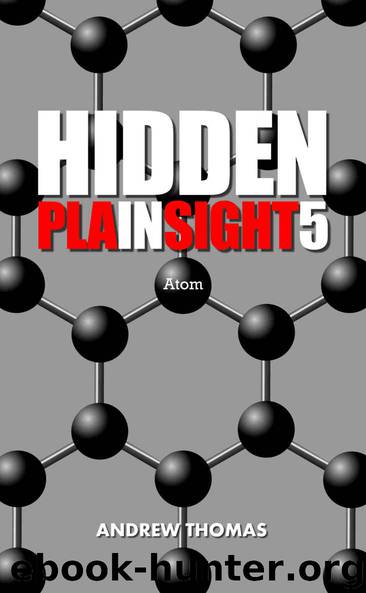Hidden In Plain Sight 5: Atom by Andrew Thomas

Author:Andrew Thomas [Thomas, Andrew]
Language: eng
Format: epub
Published: 2015-12-13T00:00:00+00:00
Particle accelerators
In a particle accelerator, electrically-charged particles are accelerated by electric forces (the modern descendent of Ernest Rutherford's cathode ray tube). A magnetic field is then used to curve the path of those particles, and this can result in particles travelling around a large loop, accelerating to a speed close to the speed of light. The particles are then made to collide with a variety of targets. By examining the results, we can learn about the structure of matter.
The Large Hadron Collider (LHC) is the largest particle accelerator ever made. In fact, it is the largest machine ever made. The LHC is a 27-km circumference loop which straddles the French-Swiss border. It is buried 175 metres deep (not for any scientific reason — only because it was simply cheaper than buying land in Geneva).
The purpose of the LHC is to accelerate beams of protons to nearly the speed of light, and then to collide two beams and examine the results.
Nothing can move faster than the speed of light, so the speed of light forms the upper speed limit for accelerated particles. However, the energy of a particle increases sharply as it approaches (but does not exceed) the speed of light. An accelerated proton in the LHC can move at 99.9999991% of the speed of light, at which point its energy is 7 TeV ("eV" represents "electronvolt" — a small unit of energy which is the standard measure of energy in particle accelerators, with 1 TeV being equal to a trillion electronvolts). An energy of 1 TeV represents the energy of a single flying mosquito. So at the LHC, the energy of 7 flying mosquitos is packed into a single proton (about a million million times smaller than a mosquito). This represents the current world record for particle accelerator energy.
The two beams of protons travel around the LHC in opposite directions before colliding head-on, giving a total collision energy of 14 TeV (7 TeV per beam).
The 27-kilometre circumference of the LHC might sound a long way, but a proton accelerated to nearly the speed of light will make over 11,000 circuits of the loop each second. At this speed, the entire beam of protons has the same energy as a French TGV train travelling at top speed. In fact, the protons are travelling so fast that in their 10-hour lifetime in the accelerator they travel 10 billion kilometres: equivalent to the distance to Neptune — and back. In ten hours!
So what is the purpose of these extraordinary particle accelerators? Why must the collision energies be so large?
There is, perhaps, a general misconception as to the purpose of these machines. It is not helped by the use of the term "atom smasher" to describe them. The impression is often that these machines need high collision energies to "break" particles into "smaller and smaller pieces". However, as was described in Chapter One, elementary particles are believed to be infinitely small points, with no internal structure — no constituent parts. It is simply not possible to break them down into smaller units.
Download
This site does not store any files on its server. We only index and link to content provided by other sites. Please contact the content providers to delete copyright contents if any and email us, we'll remove relevant links or contents immediately.
The Complete Stick Figure Physics Tutorials by Allen Sarah(7135)
Secrets of Antigravity Propulsion: Tesla, UFOs, and Classified Aerospace Technology by Ph.D. Paul A. Laviolette(4974)
Thing Explainer by Randall Munroe(3782)
The River of Consciousness by Oliver Sacks(3412)
The Order of Time by Carlo Rovelli(3072)
How To by Randall Munroe(2911)
I Live in the Future & Here's How It Works by Nick Bilton(2839)
A Brief History of Time by Stephen Hawking(2819)
What If?: Serious Scientific Answers to Absurd Hypothetical Questions by Randall Munroe(2542)
The Great Unknown by Marcus du Sautoy(2532)
Midnight in Chernobyl by Adam Higginbotham(2384)
Blockchain: Ultimate Step By Step Guide To Understanding Blockchain Technology, Bitcoin Creation, and the future of Money (Novice to Expert) by Keizer Söze(2379)
Networks: An Introduction by Newman Mark(2264)
The Meaning of it All by Richard Feynman(2213)
Easy Electronics by Charles Platt(2204)
The Tao of Physics by Fritjof Capra(2162)
Midnight in Chernobyl: The Untold Story of the World's Greatest Nuclear Disaster by Adam Higginbotham(2074)
When by Daniel H Pink(2020)
Introducing Relativity by Bruce Bassett(2015)
